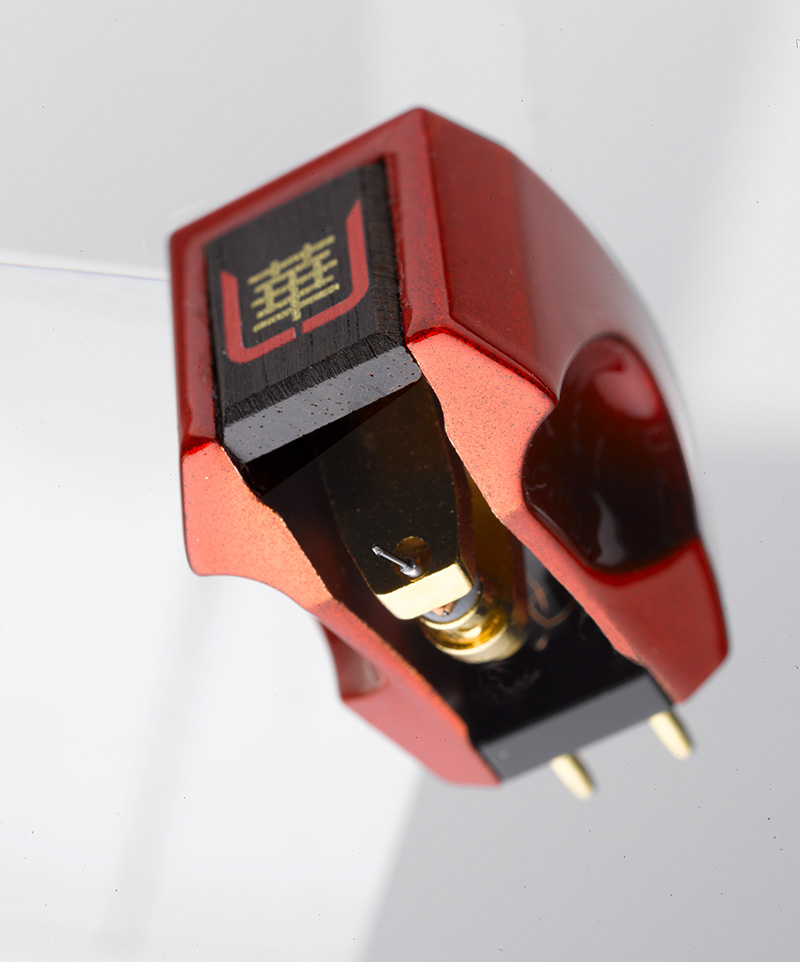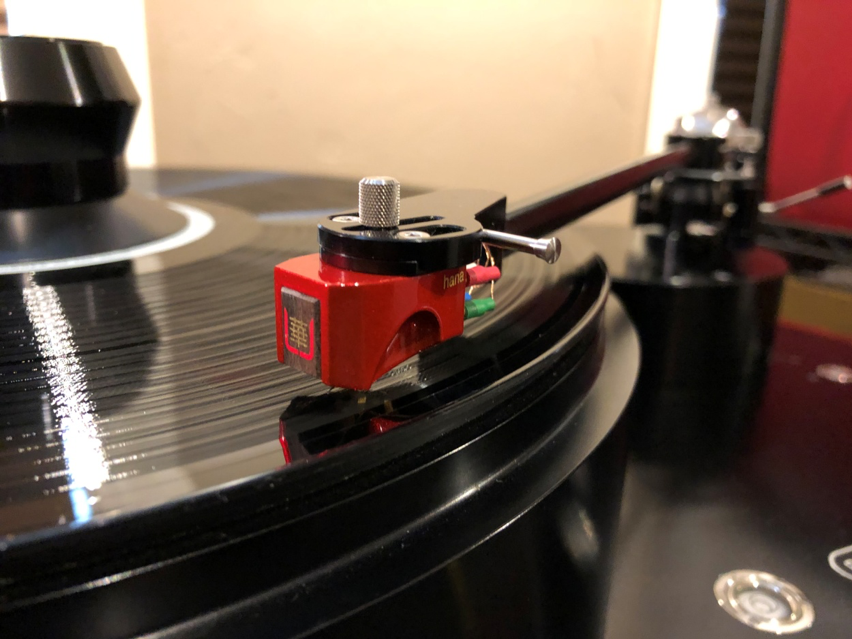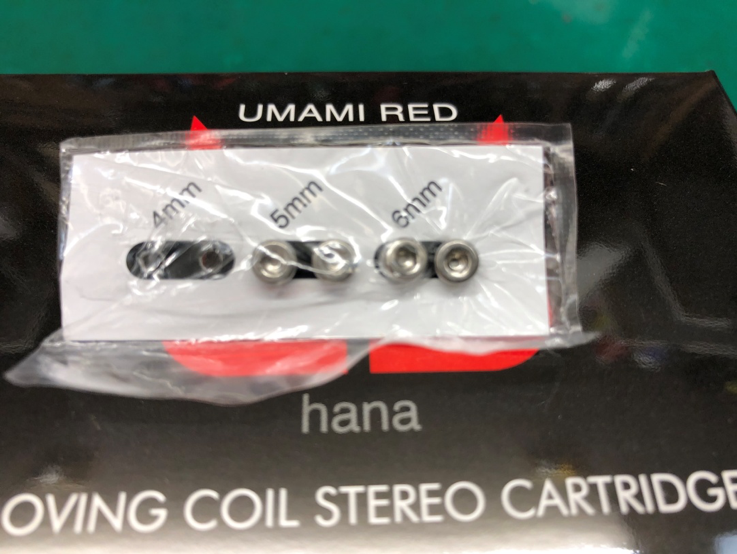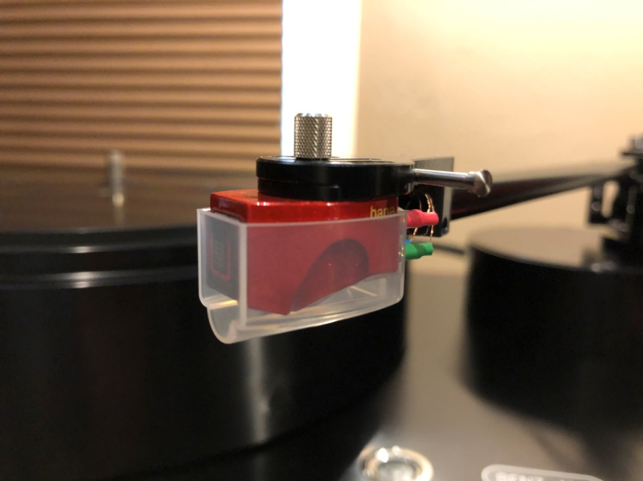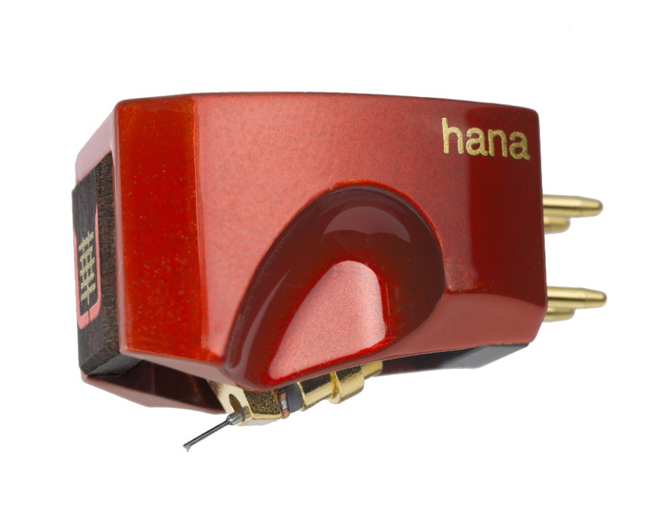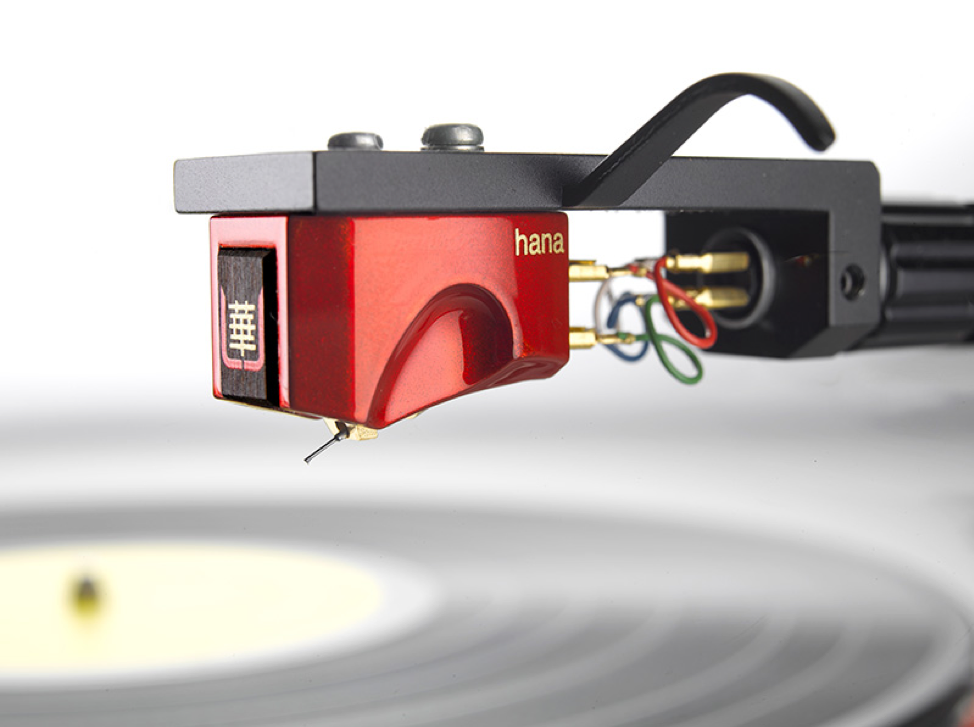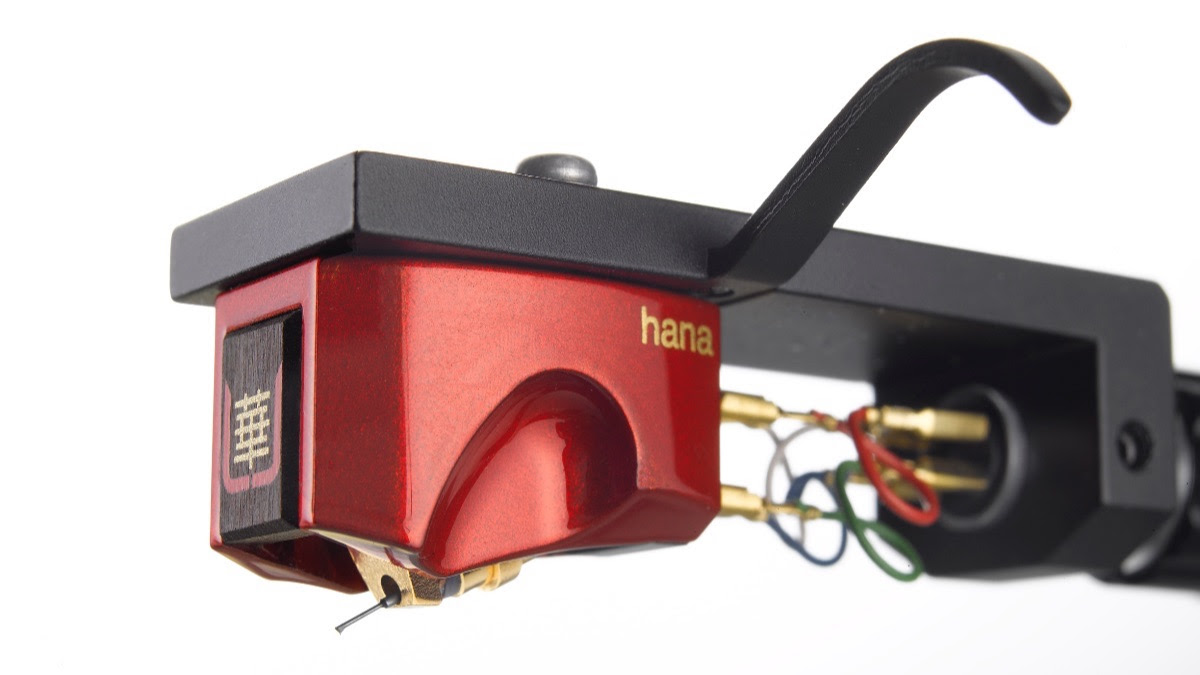
Garth Leerer, the owner of Musical Surroundings and USA distributor of HANA cartridges, contacted me a couple of months ago and asked if I was up for reviewing the new HANA-Umami Red cartridge. He didn’t have to ask twice! Since their introduction in 2016, HANA cartridges have received nearly universal praise as a cartridge line that offers sound quality substantially above their respective price points.
This praise is no accident as HANA cartridges, under the guidance of HANA’s master cartridge designer Masao Okada-san, are hand-built by a team of dedicated craftsmen at Excel Sound Japan. Excel has been building cartridges for over 50 years, and they have manufactured many noteworthy cartridges for other audio companies. Let’s just say this isn’t their first rodeo!
HANA – No Holds Barred
HANA’s current top of the line cartridges, the HANA MH and ML that retail for $1,200.00 (US), are considered by many to be exceptional values. However, I am sure music lovers have wondered what a no holds barred effort from HANA would sound like. With the release of the HANA-Umami Red, we are about to find out. It debuted on September 22nd at a retail price of $3,950.00. That price point puts the Umami Red squarely up in the “Big Leagues”.
The Umami Red is HANA’s full-blown effort to compete in the arena where the likes of Koetsu, Micro Benz, Kiseki, Lyra, Dynavector and several other excellent cartridges reside. Does HANA belong here? You have to bring it to play in this league. Have they raised their game high enough to compete here?
Synergy and Artistry
To answer this question, let’s take a look. HANA talks about the “synergy” and “artistry” in cartridge design that comes from knowing how to meld together the individual components to make a musically satisfying cartridge. Let’s look at the individual elements that make up the new HANA-Umami Red cartridge.
Auricle™ Cartridge Body
The cartridge body itself is made from A7075 aluminum, known as Duralumin. It is said to be one of the strongest and lightest alloys available. HANA has added an ebony wood insert in the front of the body to yield specific damping properties (part of that melding of elements idea).
This body/shell surrounds the open-air moving coil generator and has a sculpted design that mimics the shape of the human outer ear, hence the term auricle. I suspect it brings the sides of the body closer to the generator for increased stiffness and breaks up cartridge body resonances. Furthermore, the Umami Red’s Duralumin body is treated to a multi-layer Urushi Lacquer finish that adds another layer of resonance control. HANA’s description of the Urushi finish is as follows:
“The Urushi finish originates from the famous Japanese Makie-artistic tradition. This classic and complex procedure consists of a black Urushi painted undercoat, elaborate red-coloration process incorporating fine silver powder, “HANA” name printing with pure gold powder, and a final lacquer coating with multiple polishing steps.”
Other Component Features
Microline Stylus
The HANA-Umami Red ‘nude’ natural diamond stylus is cut and polished to mimic the cutting head stylus used to Master or cut all vinyl records. This design is said to offers the most precise fit into the vinyl groove, tracing the most delicate musical nuances.
Boron Cantilever
Boron, with a hardness comparable to diamond, was selected for the HANA-Umami Red to rigidly hold the Microline stylus. This solid Boron cantilever allows the smallest audible details and micro-dynamics to be transmitted without loss to the moving coil generator, capturing the artists’ intent.
Moving Coil Generator
The rare earth samarium/cobalt magnet material selected for the HANA-Umami Red generator offers the best electromagnetic energy, a requirement for this very musical design. Pure copper wires are expertly hand-wound onto the classic square plate Permalloy armature.
Cryogenic Processing
This ‘cold annealing’ process at near absolute zero temperature is used to treat the front yoke, the rear yoke, and the pole piece as well as the gold-plated signal output pins. Used in several audio applications, cryogenic treatment is said to alter the molecular structure of the component being treated resulting in better sound.
The HANA-Umami Red press release said:
“The Hana team is proud of their seamless integration of brilliant materials, modern audio engineering, and traditional techniques. Master designer Okada-san brings decades of experience to this design, applying the Umami concept of synergy with the HANA-Umami Red to indulge your senses in the music.”
All in all, I must say it is one stunning looking cartridge. But, hey, looks only get you so far. Let’s get it on the turntable!
The Setup Details
When I took the cartridge out of the box, I noticed a small card that included three sets of screws of varying lengths from 4mm to 6mm. Fortunately, I read the directions that come with the cartridge, something that after 40 years of setting up cartridges I am prone NOT to do. But in this case, the varied screw sizes made my “Spidey senses” tingle.
Thank you, HANA!!
The next thing I noticed was the stylus guard. OK, it’s time for another Audio Rant! Can I just say, “Thank you, HANA!” Not only did they include a stylus guard, they included one that is easy to put on or take off without fear of damaging the stylus. This may seem like a small thing but considering the price of a cartridge these days, it’s not too much to expect the manufacturer to include a useable stylus guard.
I am amazed at some of the stylus guards I see on cartridges that require you to be a Yoga expert to install. In some cases, they actually increase the potential for damage as you try to put the stylus guard on the cartridge. I am even more amazed by manufacturers that do not include a stylus guard! Shame, on you! OK, that’s the end of my rant.
Physical Setup
I installed the Umami Red on my AMG Veilla 12JT Turbo turntable/tonearm combo. I alternated between the Cardas-sourced AMG Reference DIN cable and the Audience Front Row DIN tonearm cable.
With the overhang set correctly, I set the tracking force to the recommended 2g and set the arm parallel to the album. My next step was to check the tonearm resonance which came up to a very nice and well-controlled 9-10 Hz.
Next up was the azimuth adjustment. I typically use a Fozgometer to get me in the ballpark. Then l do a bit of fine tweaking later in the listening sessions to lock it in. Finally, I do a last recheck of the tracking force.
After listening to several familiar albums that I use for cartridge setup here is what I found worked for me. Please use this as a guide/starting point and not as gospel. This cartridge sounded its best tracking right at 2g. At 2.1, it lost the air and space of the soundstage. At 1.9, it lost the depth and complexity of the midrange and a bit of hardness crept in. This cartridge also likes to be exactly parallel to the record. As soon as I departed from that, I noticed either a forward push or a lack of “oneness” to the sound.
Note: Microline and Shibata styli are notorious for needing a lot of setup TLC. This cartridge is no different. As with any stylus other than spherical, persistence and patience making adjustments yields large sonic benefits. So invest the time and get the rewards!
Cartridge Loading
An internal coil resistance of 6 ohms would theoretically suggest a loading value of greater than 60 ohms. This is where the remote loading feature of the excellent Vinnie Rossi L2i-SE phono stage is invaluable. It allows me to remotely change loading and easily assess the impact of different loading values.
After a good bit of back and forth, I settled on 120 ohms. I think the vast majority of people will be well served with a setting somewhere between 100-200 ohms. Your particular system and preferences will dictate where you end up.
HANA – The Sound
In the cartridge brochure, they say HANA in Japanese means “brilliant and gorgeous”. Umami refers to a special sense of taste in food that results from a synergy of ingredients that create a final flavor that is more than just the sum of the ingredients. What initially seems like a bit of colorful advertising verbiage actually turns out to be relevant to this cartridge. The first words I wrote in my listening notes were “Subtle but yet Complex” followed by “Balanced and Calm”.
This is a cartridge that will appeal to a listener with a sophisticated audio palette. Why do I say that? Initially, nothing in this cartridge’s sound “jumps out at you,” and I mean that in a good way. So many cartridges editorialize the sound and, in some ways, impose their personality. This seems to make them work better for one type of music over another.
After a while, you find that you keep playing the music that sounds good with that cartridge and then ultimately grow tired of it. That is not the case with this cartridge. This cartridge will grow on you like the way you come to appreciate the complexity and depth of a good 18-year-old single malt Scotch or a fine Pinot Noir or Cabernet Sauvignon.
An Excellent Balance
The Umami Red’s excellent balance allows you to enjoy all types of music, and you will be driven to play many different types of music to fully experience this cartridge. It does a very nice job of retrieving detail and is excellent at rendering complex overtones. Make no mistake about it, like the Koetsu, the Umami-Red builds the sound from the midrange on out. It is an experience to hear a piano with this cartridge, not because it is spotlighted, but because its tone is fully revealed.
Don’t misunderstand what I’m saying here. I’m not implying that the extremes are lacking. The bass provides a firm anchor to the music, and the top end has a sweetness and openness that is simply disarming.
Another thing that stands out with this cartridge is its ability to maintain its poise. No matter what groove I threw at it, it remained calm and never showed its teeth.
Finally, this cartridge has a very low noise floor and lacks any perceivable grain. This may be attributable to the cryogenic treatment applied to many of its components and the meticulous level of attention paid to the reduction of resonance in the cartridge body.
Let’s Spin a Few
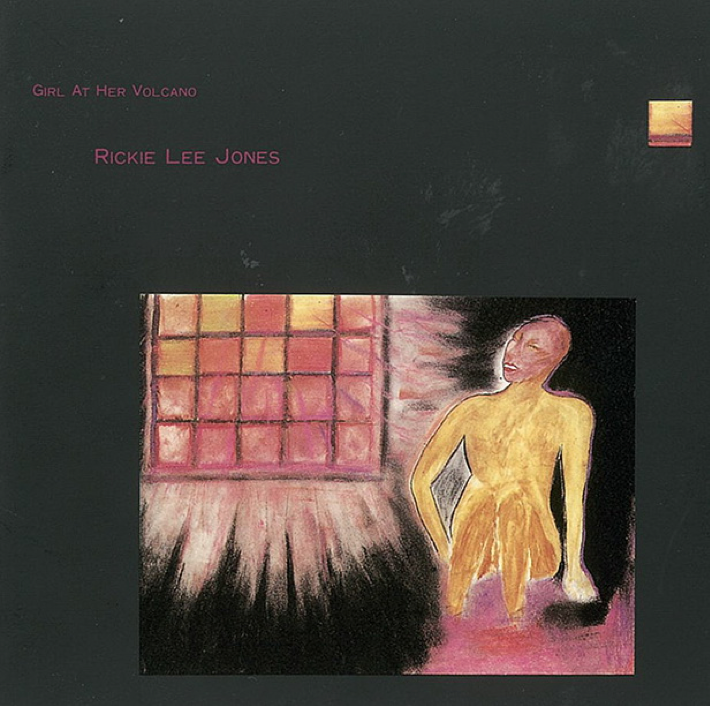
Girl at Her Volcano – Rickie Lee Jones
Of course, the best-known track on this album is “Under the Boardwalk,” and the HANA-Umami Red renders this with aplomb. At the beginning of the track, the soundstage and singers spread out in front of you as you listen. Then as the song moves to harmonizing where individual vocals are easily distinguished, the Unami Red negotiates the exceptional dynamic peaks with unflappable ease.
It was very enjoyable to listen to, but then something exceptional happened. At the end of this song I normally get up, cue up the arm, and move on to another album. Before I could do that, however, I heard the first few piano notes of the next song, “Rainbow Sleeves,” and I was instantly captivated. I sat back down and let the Umami-Red talk to me.
Rickie Lee Jones sings at a virtual whisper yet I was emotionally connected to her throughout the entire song with the Umami Red’s excellent micro-dynamic ability. At the end of the song, I just took a deep breath and reveled in the fact that I was privileged to connect with the artist.

Missing…Presumed Having a Good Time – The Notting Hillbillies
Next up I listened to a favorite album of mine by The Notting Hillbillies, a short-lived band formed by Mark Knopfler and friends in 1986. A Knopfler fan, I tracked down a sealed copy of this album many years ago, and I have enjoyed it immensely.
Released in 1990, this was the only album made by this group and it contains a good bit of country flavor anchored by a group of very talented guitarists. Buried on the last track, however, is a transfixing song that was written by Charlie Rich, the Silver Fox himself. Titled “I Feel Like Going Home,” listening to this favorite on the Umami-Red was a real treat. Throughout the song, the vocals and the haunting Knopfler guitar work at the end of the cut had me frozen in my seat. I have heard this cut many times on many different cartridges but listening with the Umami-Red was the most emotional experience I have had.
Are you seeing the trend here? The Umami-Red has Emotion with a capital E. Ok, I hear you. That’s enough with the emotional stuff. What you want to know is can the Umami-Red get up and go? Can it bring the chops when it’s asked to?

Swiss Movement – Les McCann & Eddie Harris
One of my “go-to” torture tests for tracking is the Speaker Corners reissue of the Swiss Movement with Les McCann and Eddie Harris Live at the Montreux Jazz Festival in 1969.
I first heard the original version of this on my older brother’s stereo system back in 1970. It consisted of a Dual 1019 with a Stanton 681eee, Marantz receiver, and AR3A loudspeakers. I was blown away then, and I still am today.
In the first two cuts, “Compared to What” and “Cold Duck Time,” McCann and Harris put on a saxophone and piano clinic, but it is the last-minute walk-on performance by trumpeter Benny Bailey that steals the show in my estimation. His solos push the performance to another level. Not only are they hard to track but there is a “rawness” to the sound that, if captured correctly, is amazing to hear. On the other hand, if the cartridge can’t handle the tracking, it can sound like fingernails on a chalkboard. This is an incredibly fine line that the Umami-Red negotiated without breaking a sweat. It is one of the very few cartridges that have done so for me.
We are fortunate to have a video of Cold Duck Time that is a treasure. Here is a link to it: https://www.youtube.com/watch?v=LP7awyaWtD8. At 2:24 in the video, Benny Bailey takes over the song. At around 3:30 watch for Ella Fitzgerald walking into the concert. It doesn’t get much better than this. The Umami-Red put me THERE.
Conclusion
The Umami Red is one smooth customer, but don’t let that fool you. It delivers when it needs to resolve low-level detail, and dynamics. It performs with power and grace.
This cartridge connects you emotionally to the music. It can negotiate virtually anything you throw at it and never get flustered. Its balanced sound always seems to reveal a new interpretation of music that you are familiar with. You will find yourself just wanting to pull out albums and have a listen.
This cartridge isn’t going to immediately grab you, but if given a bit of time, it could very well win you over. Its beauty is in its subtleties and its balanced tone. Maybe there is something to the fact that HANA meaning “Brilliant and Gorgeous”.
So, my takeaway about this cartridge is this, nothing stands out … yet everything stands out.
If you are looking for a cartridge in this price range that you can have a long-lasting relationship with, one that will drive you to be more involved with your vinyl collection and less involved with your equipment, then the Umami Red simply has to be on your shortlist.
What about those two questions posed at the beginning of this review?
Does the HANA Umami Red belong in the Big Leagues?
Have they raised their game high enough to play in the Big Leagues?
I would answer by saying, “Welcome to the big leagues, HANA. You’ve earned it!”
Price: $3,950.00 US
Specifications:
- Stylus tip – Nude Microline
- Cantilever – Boron
- Magnets – Samarium Cobalt
- Magnetic Circuitry -Pure Iron/Cryo treatment
- Coil Wire – Purity High Copper
- Cartridge housing – Duralumin (A7075), Ebony Wood – Urushi Finish
- Output – 0 .4mV/1Khz
- Channel Separation: >30dB/1kHz
- Frequency Response: 10Hz to 50kHz
- Impedance: 6ohms
- Suggested Load – >60 ohms
- Weight: 10.5g Color: Red
- Tracking force – 2gr

